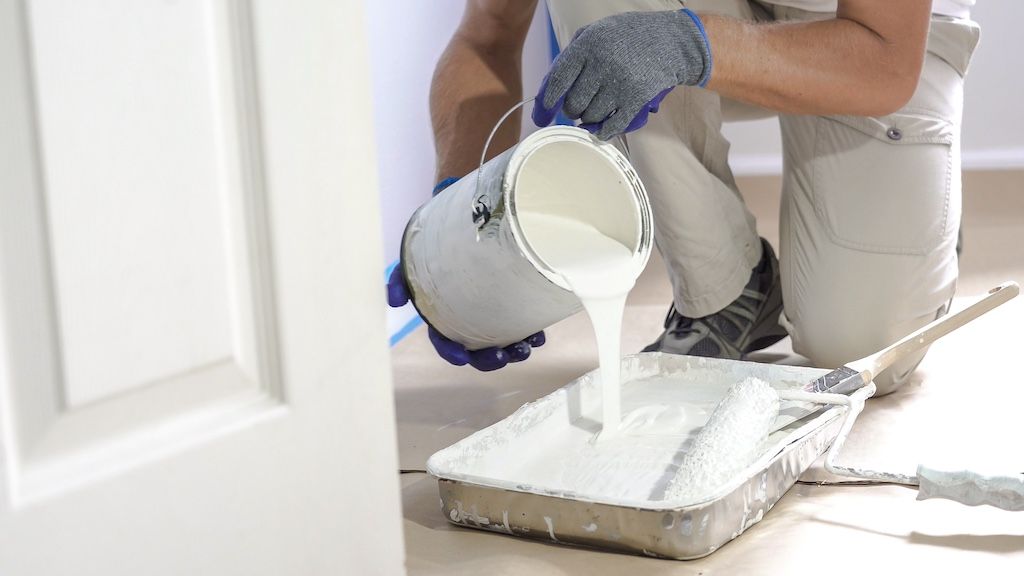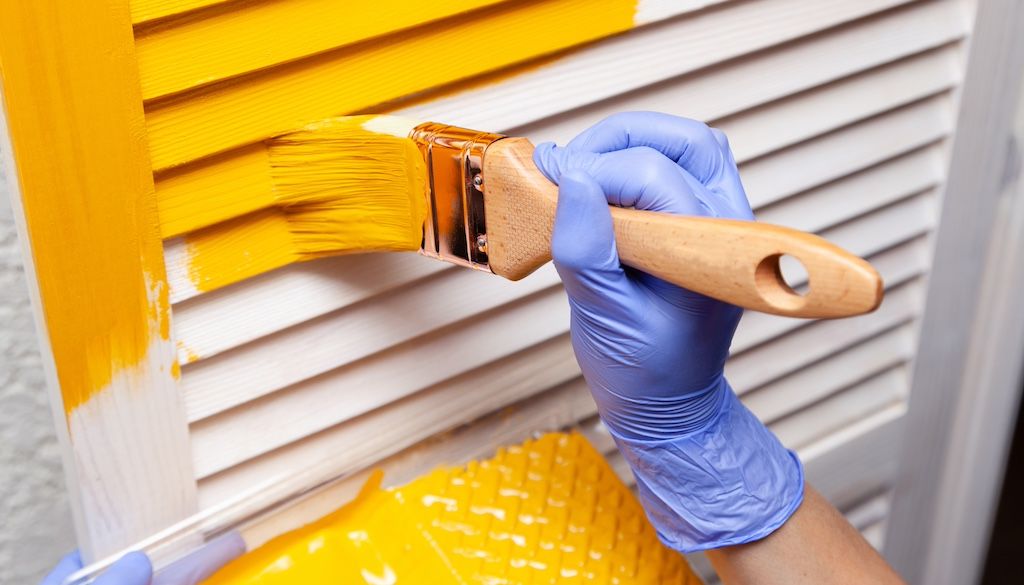Factors that contribute to darkening or lightening of paint.
Several factors contribute to the lightening or darkening of paint as it dries. Let's review them:
Paint finish.
The primary factor that will affect how the paint holds its color after drying is the finish. Some finishes stay true to the color on the swatch, while others may be lighter or darker. There are several paint finishes, each with different levels of color retention.
- Matte: Matte paint has a flat, smooth texture. This type of finish often dries lighter than the color of the swatch.
- Eggshell: Eggshell paints are similar to matte but with a slight sheen. This type of finish doesn’t tend to change much through the drying process.
- Satin: Satin paints are the middle ground between matte and gloss and one of the most common finishes. This finish is slightly reflective and, like eggshell, dries a similar color to the swatch.
- Semi-gloss: Semi-gloss paints are a popular choice for accent elements like window trim. As they dry, semi-gloss finishes stay reflective but darken slightly in color.
- High-gloss: High-gloss paint is less common for use on walls and reflects the most light. This type of finish is more popular for use on furniture and doors. High-gloss paint also darkens as it dries.
Get a free estimate from a great interior painter near you.
Please enter a valid zip code
Oil vs. water-based paints.
 The two main types of house paint are oil and acrylic. Acrylic paints are water-based, while oil paints use mineral spirits.
The two main types of house paint are oil and acrylic. Acrylic paints are water-based, while oil paints use mineral spirits.
Acrylic paint dries faster than oil, making it easier to test multiple colors. While oil paint can take anywhere from 6 to 24 hours to dry, acrylic paint dries in as little as 1 to 6 hours.
Latex and acrylic paint.
“Latex paint” and “acrylic paint” sometimes appear interchangeably (though there are some unique differences). They're both water-based paints.
These paint types offer some elasticity to prevent cracking. As far as color retention, acrylic paint tends to have a glossier finish, which means it will darken as it dries.
Oil paint.
Oil paint has a more brittle finish than acrylic, making it more prone to cracks with extreme temperature changes. However, it provides better adhesion and penetration with a smoother finish.
Whereas acrylic paint dries due to water evaporating, oil paint dries through oxidation. As a result, oil paints hold their color as they dry and may appear darker (if they change at all).
Lighting conditions.
The lighting conditions in a room have a big effect on how we perceive the color. When you look at a wall, light bounces off the paint and into your eye, where your brain interprets the light as a color. Different types of light reflect off of paint in different ways.
One of the best ways to get an accurate idea of the paint’s true color is to paint in the daylight. Natural light gives the best representation of a paint’s true color. If artificial lighting is your only option, use daylight bulbs while applying paint.
As you go through paint swatches to select a color, note how they look under different light sources.
Applying multiple coats of paint.
The application of multiple coats affects different paint colors differently. The effect also depends on the color of the wall being painted.
For example, applying white paint to a dark-colored wall will require multiple coats. This isn’t because the white paint darkens as it dries but because the color underneath shows through.
If you're applying several coats, paint a small, inconspicuous area and let it dry. This way, you can get an idea of what another layer will look like.
Compare prices from interior painters near you.
Please enter a valid zip code
Can I prevent paint from drying darker or lighter?
 When it comes to painting projects, achieving the desired color can be a top priority. Nobody wants to spend time and effort painting a room, only to find that the color has dried darker or lighter than expected.
When it comes to painting projects, achieving the desired color can be a top priority. Nobody wants to spend time and effort painting a room, only to find that the color has dried darker or lighter than expected.
Fortunately, there are several tips and techniques you can utilize to achieve consistent paint color and prevent any undesirable changes during the drying process:
- Choose high-quality paints from reputable brands that offer color consistency guarantees.
- Prepare the surface. Start by preparing the surface adequately, ensuring it's clean, dry, and free of any debris.
- Use a primer. Applying a primer before painting can also help create a uniform surface and enhance color consistency.
- Paint evenly. When it comes to the actual painting process, it's essential to apply the paint evenly and consistently. Use smooth and overlapping strokes to ensure an even distribution of color. Avoid overloading the brush or roller, as this can lead to excess paint buildup and potential color variations.
- Create optimal drying conditions. Ideally, you should paint in a well-ventilated area with moderate temperature and humidity levels. Extreme temperatures or high humidity can interfere with the drying process and potentially alter the color. Additionally, avoid exposing freshly painted surfaces to direct sunlight, as this can cause the paint to dry too quickly and result in color variations.
By following these tips and techniques, you can minimize the chances of paint drying darker or lighter than desired. f you're unsure about the process or want to ensure professional results, consider hiring a painting professional through Thumbtack for a flawless paint job.
Hire a professional painter to refresh your home.
Painting your home’s interior or exterior is a big job. Some homeowners may prefer to hire a pro. When you leave the painting to the professionals, you can avoid the risk of a streaky coat. They’ll also be able to advise you on how different kinds of paints will change in color as they dry.
The easiest way to find a reputable home painting service in your area is with Thumbtack. On the Thumbtack app, you can see verified reviews from real customers. Download Thumbtack today to get a free quote on your painting project.
FAQs
Does paint dry the same color?
Different kinds of paints hold their color better than others. A matte paint, for example, will dry a bit lighter, while a glossier paint may appear darker than the swatch color. Eggshell and satin paint stay true to their swatch colors.
Will paint blend when it dries?
Matching paint colors requires a keen eye and some patience. Top layers of paint lose moisture at a different rate than previous coats. To control how fast the new coat dries, you can dilute the paint slightly to prolong the loss of moisture.
How should paint look when drying?
Don’t worry if the paint looks somewhat blotchy before it dries completely. This is normal, and the paint will even out as it dries. Wait for the coat to dry before applying another one.
How long does it take paint to dry and lighten?
Acrylic paint dries in 1 to 6 hours, while oil paint can take as long as 24 hours to dry completely.